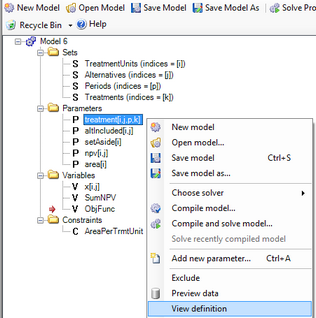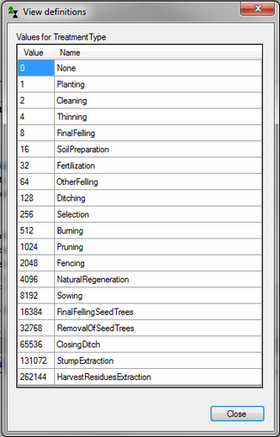Variables
In Heureka there is a large number of variables calculated that describe the forest state over time, costs, revenues, harvest yields etc. A continuous variables can take any real value, such as net revenue in period which can be either negative or positive. Other contiuous variables are non-negative, such as wood volume and tree diameters.
Categorical variables are integral vales. In Heureka most categorical variables are of so called enumeration type, meaning that for example each tree species code is predefined and has both a value and a descriptive name. For example, Pinus sylvestris has species code 11, and this values is used when entering or importing data, but in reports the name is used.
A categorical variable can be either ordinal or nominal. Ordinal means that the values has a ranking order. For example, the soil mosture code is ordinal five possible values, so that 1=Dry is the dryest site, and 5= Wet is the wettest.
Nominal (or qualitative) categorical variables mean there is no ranking, for example species code och treatment code.
|
See also: The Heureka Wiki has an overview of variables calculated by Heureka.




